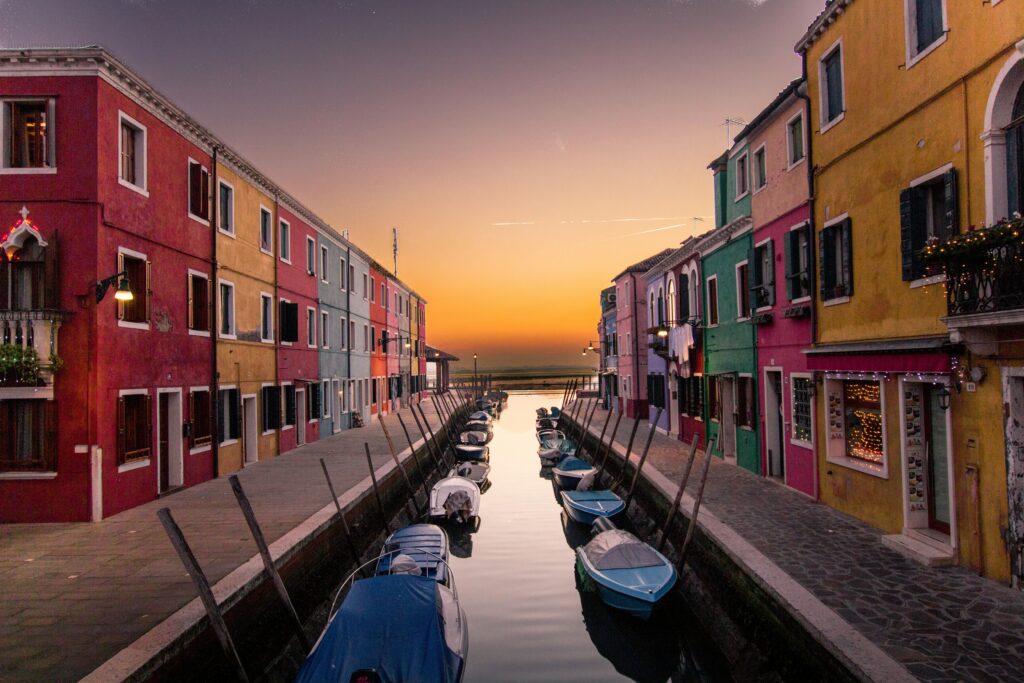
Architecture, flavor, fashion and natural beauty.
If you’ve ever dreamt of a road trip where every turn takes you deeper into centuries of art, architecture, local flavor, and low-key luxury—Northern Italy is your move.
This 5-day itinerary starts in Milan and winds through alpine lakes, medieval strongholds, vineyard-covered hills, and ends with the salty canals of Venice. We kept it tight: driving distances under three hours, under-the-radar restaurants that you don’t have to book weeks in advance, and one-of-a-kind shopping finds that are deeply rooted in place.
Let’s hit the road. And check out the Italy page on Cerca Travel to read more about what you must eat and experience while in Italy. Plus our podcast guides for places like Rome, and the wine of Tuscany.
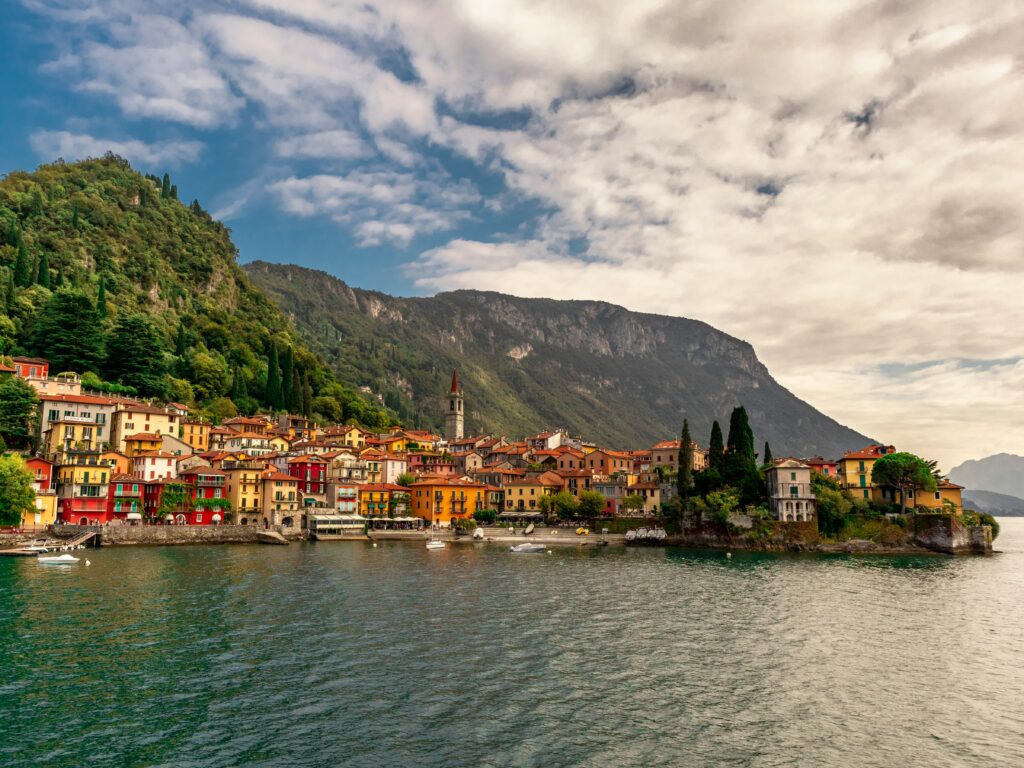
Day 1: Milan → Lake Como (Como Town)
Distance: 51 km | Time: 1 hour
Milan may be Italy’s fashion capital, but the real magic lies in what happens when you leave the city behind and follow the curve of the Alps into the folds of Lake Como. Known since Roman times as a noble retreat, Como Town is elegant but unpretentious, with a waterfront that feels like a movie set.
Nestled at the southern tip of Lake Como and cradled by the foothills of the Alps, Como Town has long been a crossroads of commerce and creativity. Its history stretches back to Roman times, when it was known as Comum, a strategic outpost for Julius Caesar’s expansion into northern Italy. The town was rebuilt in a grid pattern in the first century BCE—an unusually rational layout for the time—and traces of that Roman order still anchor the old city center today.
During the Middle Ages, Como was contested territory between Milanese dukes and imperial forces, leading to the construction of imposing city walls and watchtowers, some of which still remain. In the Renaissance, Como became a magnet for wealthy Lombards and Milanese aristocrats who built opulent villas along the lake, surrounded by meticulously landscaped gardens. The lake’s beauty—and the clean alpine air—drew poets, painters, and eventually early tourists during the 18th and 19th centuries.
But Como’s most lasting cultural legacy is its silk industry. By the 1400s, silk production was booming here, with techniques imported from Asia and refined through local expertise. Today, Como silk is still a mark of Italian luxury, with scarves, ties, and fabrics exported globally and used by brands like Hermès and Armani.
Culturally, Como is where nature and refinement meet: lakefront promenades frame neoclassical villas, the Gothic-Romanesque Duomo rises from a café-lined piazza, and traditional Lombard cuisine is still celebrated in neighborhood trattorias. This is Italy, slowed down and laced with elegance.
What to Do:
Start at Villa Olmo, an 18th-century neoclassical villa built to impress Napoleon and the Austrian aristocracy. Wander through its gardens to catch the best views of the lake.
Where to Eat:
In Blevio, you could go for Michelin stars at L’Aria overlooking the water in style, or opt for inexpensive, but authentic at Ristorante Bar Central – there’s no website, just classic pasta dishes made with local ingredients.
Where to Shop:
For a truly genuine Como silk experience, skip the tourist traps and visit the Civico Museo Setificio Monti in Abbadia Lariana. Housed in a restored 19th-century water-powered mill, this museum still operates some of the original looms used by Pietro Monti since 1818. You’ll gain an insider’s view of the silkworm-to-scarf process, then shop scarves, ties, and accessories produced in-house or nearby—crafted using the same artisanal techniques that made Como silk world-famous.
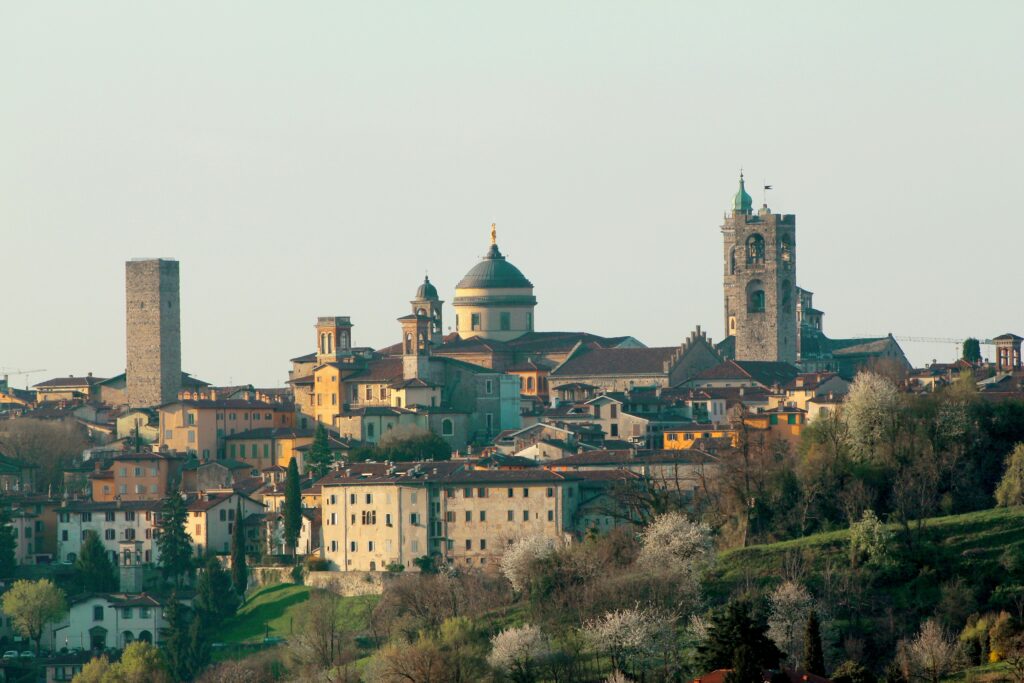
Day 2: Como → Bergamo Alta
Distance: 105 km | Time: 1 hr 45 min
Bergamo is the best medieval city you’ve never heard of. The Città Alta (upper city) sits high on a hill and looks much the same as it did 500 years ago. It’s a UNESCO World Heritage Site, but you’ll still have quiet corners all to yourself.
Encircled by Venetian walls, Bergamo Alta (the Upper City) feels like a city suspended in time. Its cobbled alleys, Renaissance palazzi, and medieval towers have survived intact through centuries of war, trade, and transformation. The city’s layered culture reflects its history as a crossroads between northern Europe and the Italian heartland. For nearly four centuries, Bergamo was under Venetian rule, and the influence is unmistakable—from the distinctive stone lion carvings on city gates to the walled fortifications.
Culturally, Bergamo is fiercely independent, with a strong local identity rooted in Lombard traditions and the Bergamasque dialect, which is still spoken with pride in local homes and cafés. Music runs deep here—Bergamo was the birthplace of Gaetano Donizetti, one of Italy’s great opera composers, and his legacy lives on through the Teatro Donizetti and the annual music festival in his name.
Food culture is equally proud and deeply regional. Signature dishes like casoncelli (meat-stuffed pasta with butter and sage), polenta taragna, and mountain cheeses are symbols of the area’s rustic alpine soul. Bergamo Alta is a place where art, architecture, and the flavors of the land are woven seamlessly into everyday life.
What to Do:
Take the historic funicolare (cable car) up to the old town and spend your morning exploring Piazza Vecchia, Santa Maria Maggiore, and the ornate Colleoni Chapel—a Renaissance masterpiece by architect Giovanni Antonio Amadeo.
Where to Eat:
Locals swear by Trattoria Parietti, a rustic family-run tavern serving casoncelli, a Bergamasque pasta filled with meat, sage, and butter. It’s been around since 1970 and it tastes like your nonna made it.
Where to Shop:
Crespi d’Adda – Just 20 km (30 min drive) from Bergamo Alta lies this UNESCO-listed città‑fabbrica, a 19th-century company town built by the Crespi family around a cotton mill. Today, it’s a beautifully preserved snapshot of industrial-era life: worker housing, school, church, and factory—all intact.
Stroll its orderly streets and explore the mill’s grounds, then step inside the old factory turned museum. It’s not a shopping mall—but you can purchase locally made cotton textiles, artisanal crafts, and souvenirs from the site’s visitor center, all tied to Crespi’s rich textile heritage. It’s a rare chance to buy something truly tied to the place’s history, rather than generic souvenirs. (Admission to the cotton mill is instead only possible with a guided tour on specific days between May and November.)
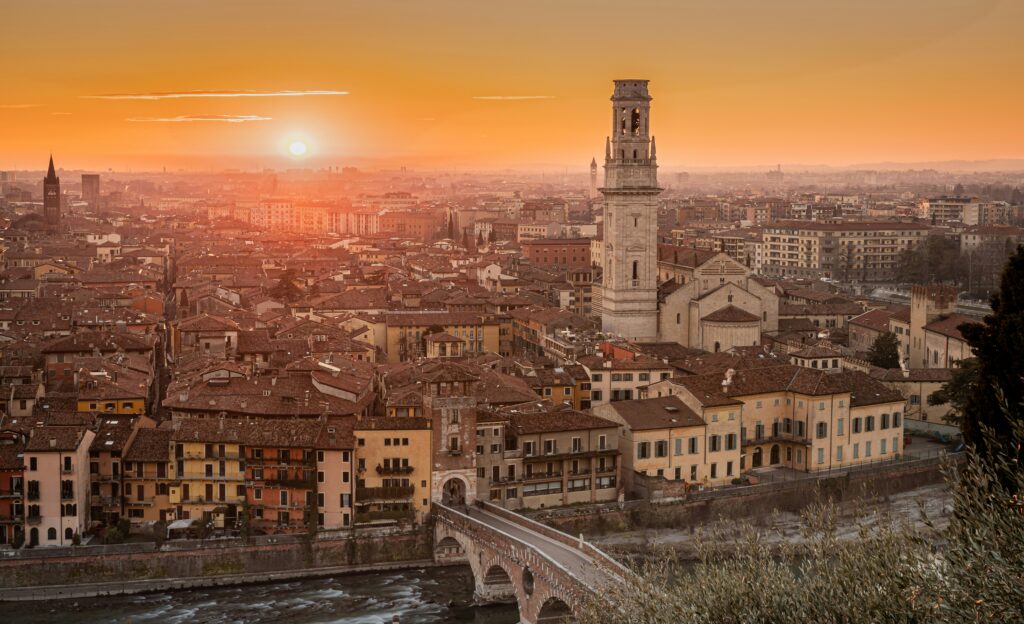
Day 3: Bergamo → Verona (via Franciacorta)
Distance: 125 km | Time: 2 hrs
Today’s route rolls through Franciacorta, Italy’s answer to Champagne—an area famous for its méthode traditionnelle sparkling wines. Then it’s on to Verona, the Roman city turned Renaissance jewel (and yes, home of Juliet’s balcony).
What to Do:
Tour a sustainable vineyard like Barone Pizzini, one of the first to go fully organic in Franciacorta. Then head to Verona to visit the Roman Arena, still used for opera performances, and the elegant Piazza delle Erbe, where medieval towers meet pastel Renaissance façades.
Where to Eat:
Step inside Locanda di Castelvecchio, a slow-food sanctuary across from the old castle bridge. Try the bollito misto—boiled meats served with traditional, mustardy pear chutney and horseradish cream. Or you might stumble over the postage stamp of a restaurant, Bottega del Gusto and sit down for local’s favorite Guanca in Barolo while looking out at the sunset.
Where to Shop:
Head to Via Giovanni Zambelli (near Via Cappello) in Verona’s historic center, where you’ll discover small boutiques brimming with locally crafted treasures. Stop at Il Gelso, a cozy stationery and bookshop offering handmade notebooks, journals, and paper goods—every piece reflecting traditional craftsmanship. Just around the corner in a charming little square, you’ll find Gioia, a boutique selling handmade jewelry, bags, and clothes crafted by regional artisans
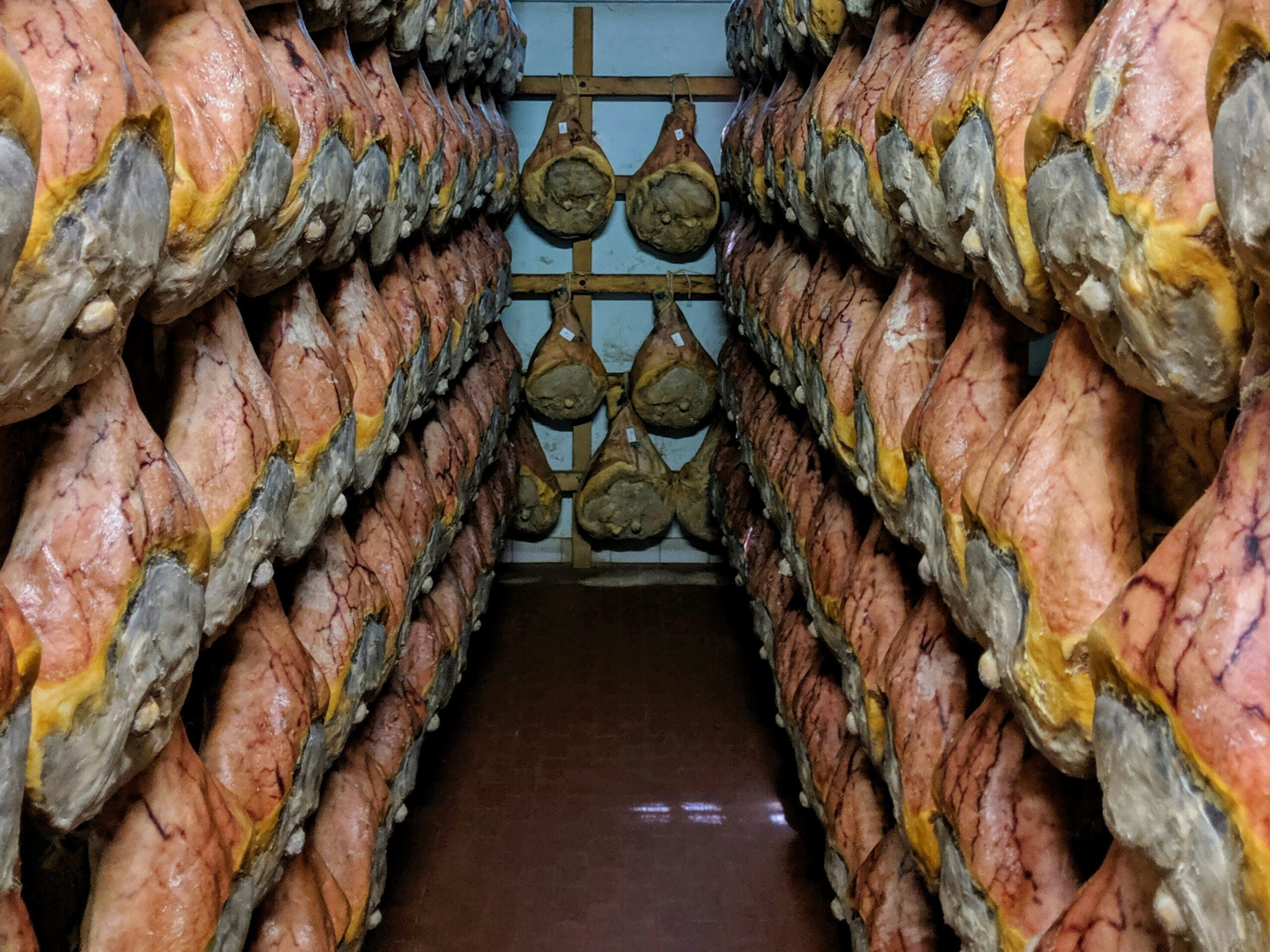
Day 4: Verona → Modena (via Parma)
Distance: 145 km | Time: 2 hrs
Today is a trifecta of food culture. Parma is the birthplace of prosciutto and Parmigiano-Reggiano. Modena, meanwhile, is all about aged balsamic vinegar, opera, and (pretty famous) fast cars.
Parma is the soulful heart of Emilia-Romagna, where music, food, and civic pride intertwine. Home to the world-renowned opera composer Giuseppe Verdi, the city hums with cultural sophistication—especially at Teatro Regio, its neoclassical opera house. But Parma’s real fame lies in its cuisine: Prosciutto di Parma and Parmigiano Reggiano are globally protected treasures, rooted in centuries-old traditions. Even locals shop reverently for food, treating markets like cathedrals. The city blends Roman foundations with Renaissance beauty, and its laid-back pace, cobbled streets, and elegant piazzas reflect a community that values craft, quality, and a quiet kind of grandeur.
Parma pairs perfectly with Modena, city where fast cars and slow food live in perfect harmony. The birthplace of balsamic vinegar, it treasures the art of aging—both in vinegar barrels and family recipes passed through generations. It’s also the hometown of Enzo Ferrari, and nearby Maranello still roars with Formula 1 ambition. But Modena is far more than engines and elixirs; it’s also about music, with deep ties to Luciano Pavarotti, and architecture, with a UNESCO-listed Romanesque cathedral anchoring the historic center. Locals are intensely proud of their heritage—quietly stylish, fiercely culinary, and devoted to preserving their regional identity.
What to Do:
Stop in Parma for a morning tour of Caseificio San Pier Damiani, a Parmigiano-Reggiano dairy where you’ll watch the cheese-making process from curds to wheels. In Modena, visit the Museo Enzo Ferrari and stroll Piazza Grande, anchored by an 11th-century cathedral.
Where to Eat:
Modena is home to Massimo Bottura, one of Italy’s most famous chefs, but for something low-key and legendary, try Trattoria Aldina—hidden above a butcher shop, this old-school gem serves tortellini en brodo and braised pork cheek with Lambrusco.
Where to Shop:
Acetaia Malpighi has been making traditional balsamic vinegar for over 150 years. Book a visit to their vinegar lofts and taste the difference between a 12- and 25-year aged bottle.
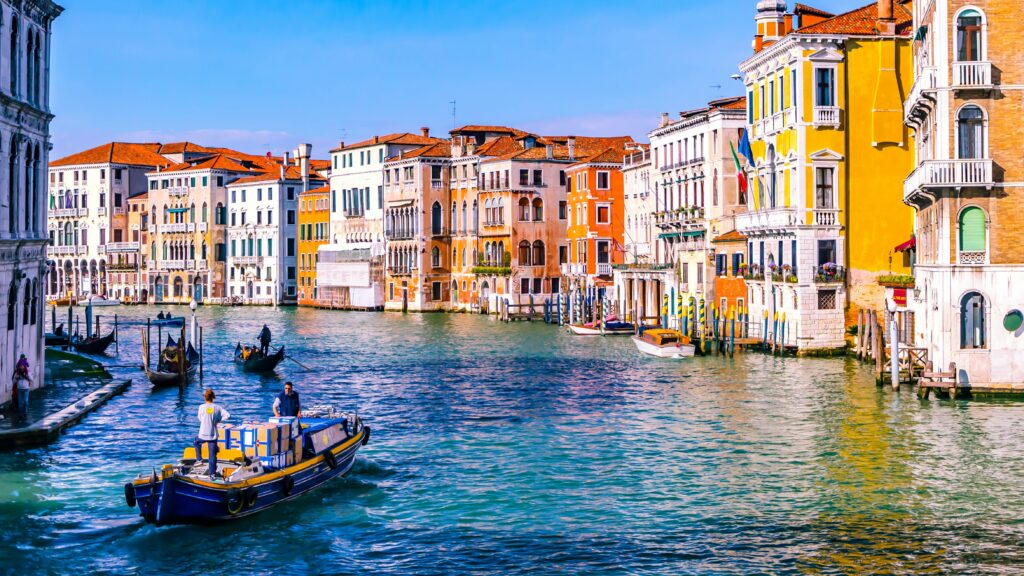
Day 5: Modena → Venice
Distance: 160 km | Time: 2 hr 15 min
End your trip with the dream: Venice. But skip the crowds in San Marco and head to Cannaregio, a working-class district that was once the site of the world’s first Jewish ghetto. This is Venice for Venetians.
What to Do:
Wander the canals of Cannaregio, stopping at the Jewish Museum and restored synagogues. Then take a vaporetto (water bus) to Murano Island for a proper glass-blowing demo.
Where to Eat:
Osteria Anice Stellato is a little off the main drag and big on flavor. Expect slow-cooked octopus, seasonal cicchetti, and the best lemon semifreddo you’ve ever had.
Where to Shop:
Skip the touristy glass shops and head to Gianni Seguso, a true Murano master glassblower whose family has been doing this since the 14th century. Everything here is handmade and designed to last.
Next?
From Venice, you can catch a fast train back to Milan in just over 2.5 hours. Or keep going—Ravenna, Trieste, and the Dolomites are all within reach.
More itineraries with off-the-beaten-path suggestions and cultural context to enrich your journey at CercaTravel.com!